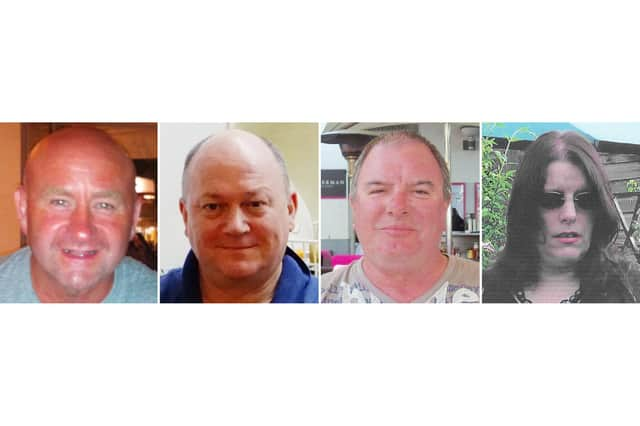Pilot error to blame for fatal North Sea helicopter crash, FAI finds.


In his determination following the FAI, Sheriff Principal Derek Pyle said the crash happened because the commander failed to maintain the target approach speed of 80 knots.
He wrote: "If he had done so, the helicopter would not have reached the critically low energy state from which recovery was impossible.
Advertisement
Hide AdAdvertisement
Hide AdTwo crew members and 12 passengers on the Super Puma L2 survived when it ditched on its approach to the airport at 6.17pm on August 23 2013.
But Sarah Darnley, 45, from Elgin, Moray; Gary McCrossan, 59, from Inverness; Duncan Munro, 46, from Bishop Auckland, County Durham, and George Allison, 57, from Winchester, Hampshire, died.
Survivor Samuel Bull took his own life in London in 2017, which Sheriff Principal Pyle said was "directly caused" by the crash.
An AAIB report published in 2016 found that the pilots failed to properly monitor the flight instruments and failed to notice their speed was decreasing until it was too late to avoid the helicopter plunging into the sea.
And the FAI also found that all the safety barriers in place did not manage to prevent or remedy the pilot's "one failure" to maintain the correct speed as it approached Sumburgh Airport in Shetland.
"That is where ultimate responsibility rests,” Sherriff Principal Pyle wrote in his findings. “But as several witnesses explained there are other safety barriers in place each of which of its own would prevent such a failure either occurring or, if it does occur, quickly and effectively remedying it."
He said there was "plainly no wilful neglect" on the part of Captain Martin Miglans, describing him as a "pilot of huge experience with a first class record of flying over many years".
However he said: "Rather, there was, as one witness described it, a perfect storm of circumstances which resulted in all the safety barriers in place not preventing - or remedying - his one failure, to maintain the correct speed."
Advertisement
Hide AdAdvertisement
Hide AdIn his determination, he said that there were no precautions which could reasonably have been taken that might realistically have resulted in the deaths, or the accident resulting in the deaths, being avoided.
He also praised the "exemplary conduct" of co-pilot Alan Bell, both in the seconds immediately before the crash and in his efforts to save the survivors, "but for which others would almost certainly have died."
During evidence from survivors during the FAI, held virtually in August and September, some described their submersible training and contrasted it with training for the Norwegian sector, which some said was more realistic.
However, Mr Pyle said that a balance has to be struck between realism and the safety of those being trained and that it would be "impractical, perhaps impossible", to provide realistic training which would ensure that passengers had sufficient experience to make a significant difference.
He added: "This was a dreadful accident with long-term repercussions for the survivors and the families of the deceased which no determination by this court can properly describe."